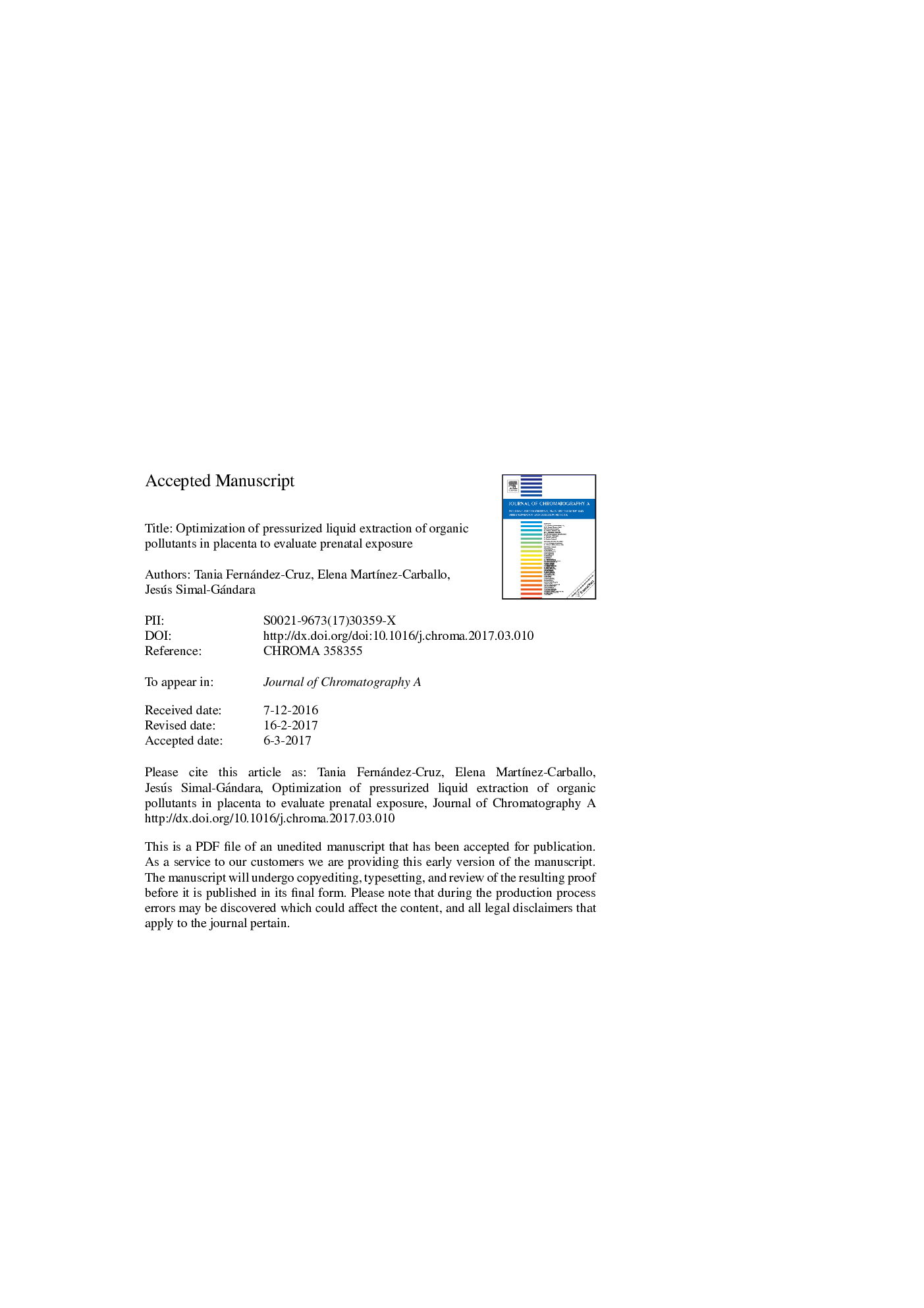| Article ID | Journal | Published Year | Pages | File Type |
|---|---|---|---|---|
| 5135328 | Journal of Chromatography A | 2017 | 32 Pages |
Abstract
The early exposure to organic pollutants (OPs) related to dietary habit or environmental exposure is a concern of growing interest in environmental health. When OPs enter the body, they can accumulate in fatty tissue and even travel through the bloodstream being able to cross the placenta and reach the fetus through the substance exchange between the mother and the child. Epidemiologic and clinical data affirm that these chemicals increase the risk of adverse effects during childhood. This article reviews and addresses one of the most relevant analytical methods for determining OPs in placenta. We discuss and critically evaluate procedures, such as solid-liquid and selective pressurized liquid extraction (SPLE). Clean-up of extracts was performed by solid-phase extraction (SPE) using EZ-POP cartridges. Detection of OPs was carried out by gas chromatography (GC) coupled to tandem mass spectrometry (MS/MS). Recoveries ranged from 52% to 94% by SPLE with estimated quantification limits between 0.15 and 2.2Â ng/g for organochlorine pesticides (OCPs), between 0.083 and 0.50 for organophosphate pesticides (OPPs), between 0.025 and 0.15Â ng/g for polychlorinated biphenyl (PCBs), between 0.015 and 0.10Â ng/g for polybromodiphenyl ethers (PBDEs), between 0.33 and 0.66Â ng/g for pyrethroids and between 0.022 and 0.87Â ng/g for polycyclic aromatic hydrocarbons (PAHs). Most of the target OPs were detected in twenty real placenta samples studied, with pyrethroids, PAHs and OPPs representing most of the 90% of OPs with means of 13-18Â ng/g versus PCBs, OCPs, and PBDEs with means <4.0Â ng/g. The rsults of this work indicate a prenatal exposure to OPs in Galicia.
Related Topics
Physical Sciences and Engineering
Chemistry
Analytical Chemistry
Authors
Tania Fernández-Cruz, Elena MartÃnez-Carballo, Jesús Simal-Gándara,
